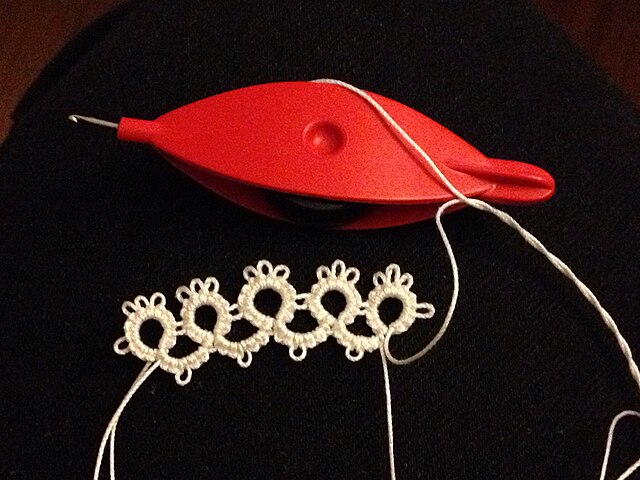Tatting is a technique for handcrafting a particularly durable lace from a series of knots and loops. Tatting can be used to make lace edging as well as doilies, collars, accessories such as earrings, necklaces, waist beads, and other decorative pieces. The lace is formed by a pattern of rings and chains formed from a series of cow hitch or half-hitch knots, called double stitches, over a core thread. Gaps can be left between the stitches to form picots, which are used for practical construction as well as decorative effect.
Pine pattern collar in tatting
Vintage tatting shuttles from the early twentieth century
Newer type of shuttle with hook
Needle tatting in progress. A completed closed ring of 5ds segments with a picot loop between each is shown. Another uncompleted loop is still on the needle.
Lace is a delicate fabric made of yarn or thread in an open weblike pattern, made by machine or by hand. Generally, lace is split into two main categories, needlelace and bobbin lace, although there are other types of lace, such as knitted or crocheted lace. Other laces such as these are considered as a category of their specific craft. Knitted lace, therefore, is an example of knitting. This article considers both needle lace and bobbin lace.
Valuable old lace, cut and framed for sale in Bruges, Belgium
Square Lace "Sampler," 1800-1825, Brooklyn Museum
Unknown Holland painter, Portrait of woman, 17th century, National Gallery of Armenia
Needle lace, showing button hole stitch








